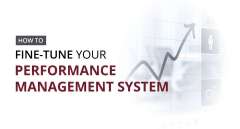Organizations with consistent track records of success have systems that support consistent performances by the large majority of their workforces. These organizations do not rely on the ability of the outstanding minority, but rather build excellence by implementing systems that focus on the competent, but the not outstanding, majority.
One of the major reasons why strategies in organizations fail is because they are not in accordance with general systems theory. If we were to study the laws of nature, we would see that everything that endures is systematic. Everything that is disorderly or ad hoc, on the other hand, dies. In other words, order leads to more order, while disorder leads to chaos. So an organization, a department, a new system that is purposeful, organized and systematic will succeed; one that is disorganized and ad hoc will not.
The utility of the systems concept, according to Dr. M Kabat, and M Fielding to managing an enterprise may be viewed in terms of two elements of the manager’s job. Firstly, he wishes to achieve overall effectiveness for his organization and secondly, he does so in an environment involving conflicting organizational objectives.
A characteristic of all systems is the interrelationship of parts within the system. Teams are made up of parts or sub-systems within larger systems; changes to one sub-system affect every other system. Just as the human heart is a sub-system within the body’s physiological system, the finance plan is a sub-system of the overall business plan.
Ever since Imai’s 1986 book Kaizen: The Key to Japan's Competitive Success, popularized the concept of continuous improvement it has received much-deserved attention. However, the focus has been on the continuous improvement of products, services, and processes. No less important is the people systems that form an essential part of the work environment or culture.
The ten basic systems essential to creating an environment or culture that optimizes employee capability and contribution:
- The Strategic Business Planning System
- The Performance Measurement System
- The Performance Management system
- The Performance Feedback System
- The Performance-linked Communication System
- The Performance Appraisal System
- The Technical System
- The Strategic Human Resource Development System (Performance-linked Learning)
- The Financial System
- The Reward System
The continuous improvement of these ten systems is no less important than the continuous improvement of products. services and processes.
TALK TO US ABOUT HOW WE CAN HELP YOUR BUSINESS
Book an obligation free clarity call to discuss our programs and your requirements.
Online Access, on our Learning Management System, or yours, to all five Sacher Associates courses:
- A Commonsense Approach to Business Planning
- Performance Measures Applied
- Performance Linked Communication
- Success Through Team Performance
- Performance Linked Learning
Discover how we can help your business increase productivity and improve performance:
- Discussion on consulting requirements
- Diagnostic review of your company
- Multiple User Access
- Access to Sacher Associates exclusive closed Facebook Group
- Customised courses and delivery solutions








